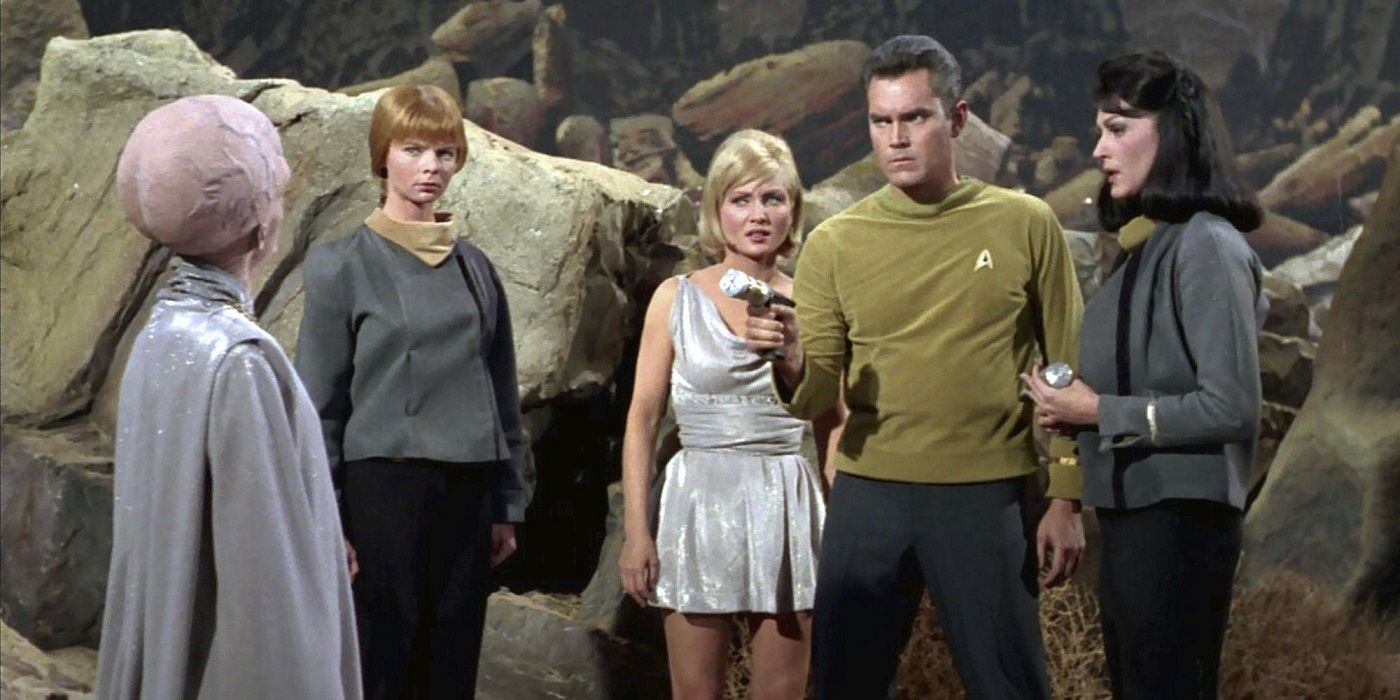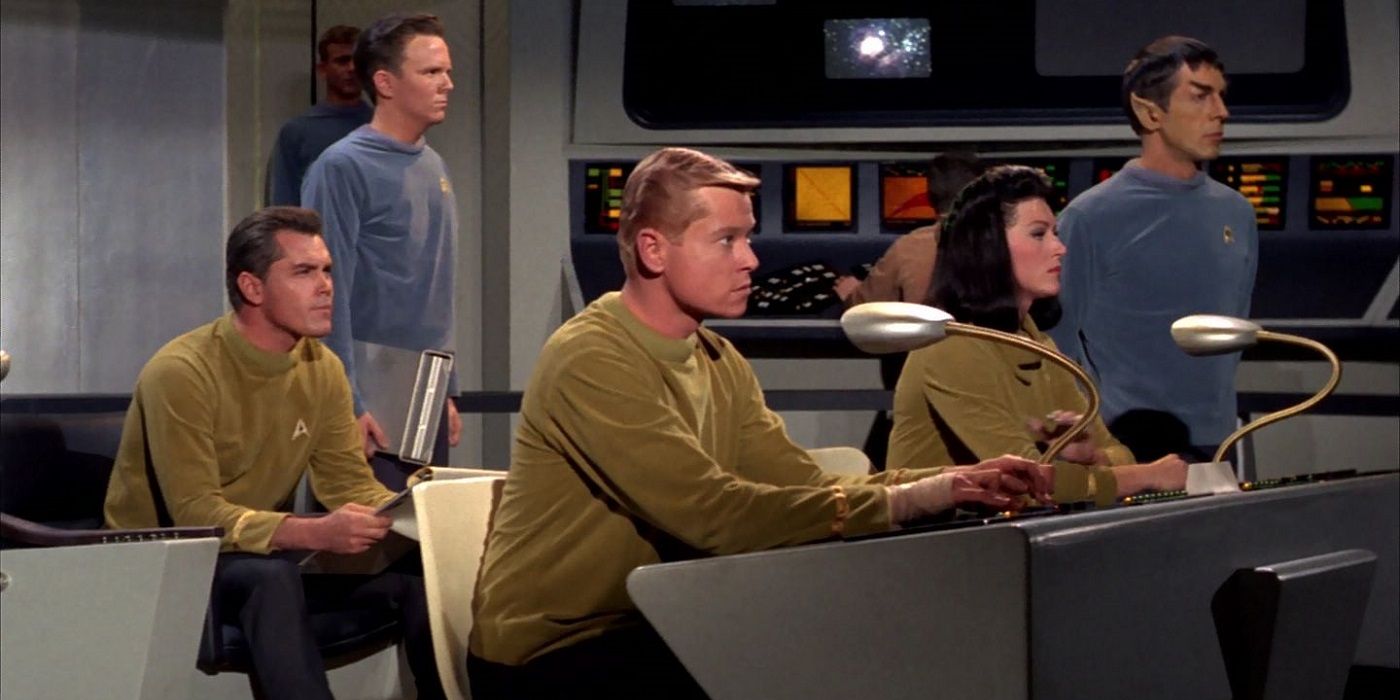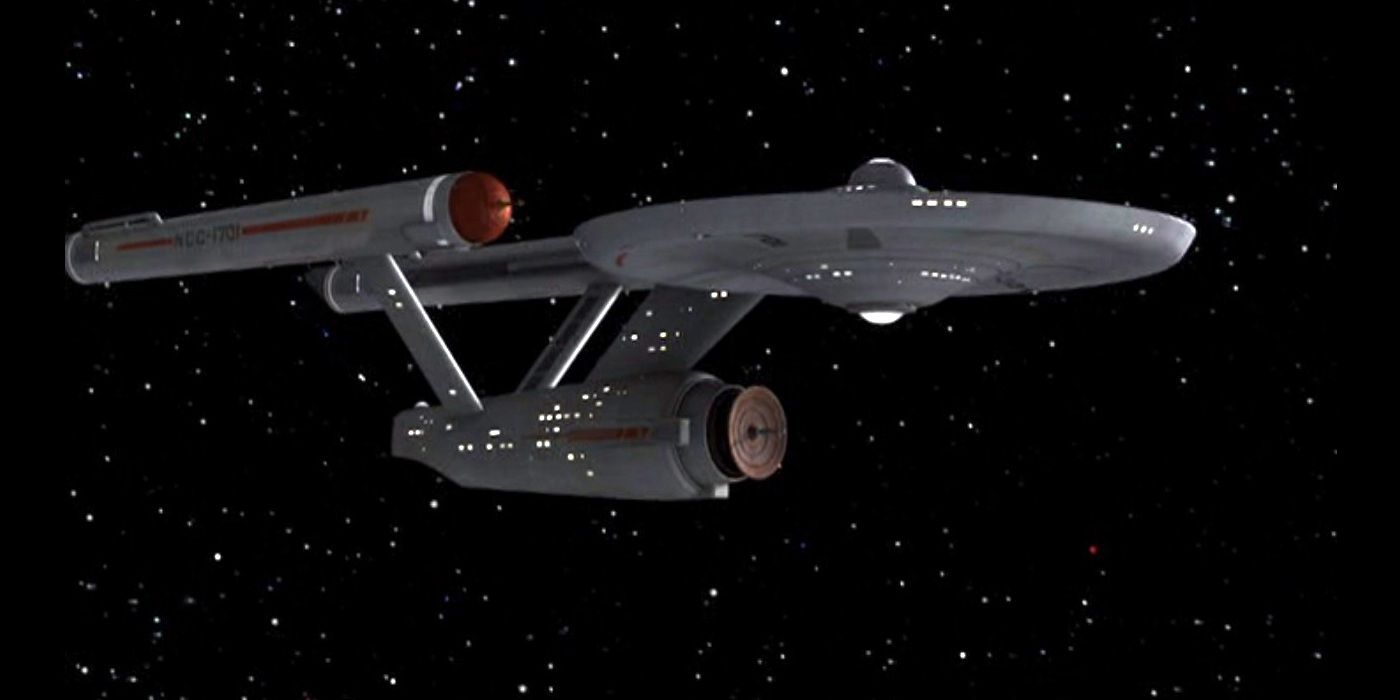Gene Roddenberry had limitless ambition when he first proposed Star Trek. The scope of what he had in mind couldn’t be covered with the capabilities of television at the time. His idea still had to fit inside the screen and let the network make money. Star Trek did amazing things with the visual effects at its disposal, using them as judiciously as it could, which sometimes meant abandoning less practical concepts. This extends to the first aliens depicted on the show -- the Talosians, Christopher Pike’s antagonists in the original pilot, “The Cage.” Plans for the Talosians were originally much different.
According to The Making of Star Trek, Stephen E. Whitfield’s and Roddenberry’s seminal reference book, the original script for “The Cage” referred to the aliens holding Pike captive as “crab creatures,” and they remained that way until the first scripted teleplay. Then they were altered to become slim humanoids with enlarged heads. The reasons why say a lot about how Star Trek began and the compromises Roddenberry had to make to get it to the screen.
“The Cage” began as one of the multiple ideas that Roddenberry prepared as part of his pitch to NBC. Ultimately four different script ideas were proposed. “The Cage” was selected in part because its epic nature would prove more difficult to film than the other three pitched episodes. The network wanted to see if the production company could do it. In addition, the pilot was sold with the understanding that it would be 90 minutes long and could serve as a TV movie if NBC didn’t want to pick up the series. Network executives might have hedged their bets by demanding a high-end production to ensure a better “movie” if they didn’t want to pursue the series.
The crab monsters were a part of that since nonhumanoid creatures required more special effects and presumably greater expense. They also fit more readily into the pilot’s concept of Pike kept on display in a kind of zoo for the Talosians, who viewed him as a biological specimen more than a sentient being. The less human such creatures looked, the more readily “The Cage” emphasized its central idea.
But the expense of creating monsters of that sort became an issue the moment NBC demanded a big epic production. Replacing them with human actors in make-up freed up more funds to spend elsewhere. In addition, the production team worried that any crab creatures they came up with would look unconvincing and harken back to cheap 1950s monster movies that Star Trek wished to avoid. Humanoid Talosians adequately fit the episode's need while still establishing the tone Roddenberry wanted, without taxing an already stretched production past its breaking point.
Though memorable, the Talosians appeared only in “The Cage,” and its repackaged variation “The Menagerie” before vanishing from canon until Pike’s return in Star Trek: Discovery. Considering his fate, it’s likely they will return in Star Trek: Strange New Worlds. Ironically, current effects are sophisticated enough to give life to Roddenberry’s original concepts in ways that wouldn’t have been possible in the 1960s. Star Trek made the change to get on the air, and the crab monsters turned out to be unnecessary. But if producers wanted to re-explore the notion, Strange New Worlds might just be a way to do it.



